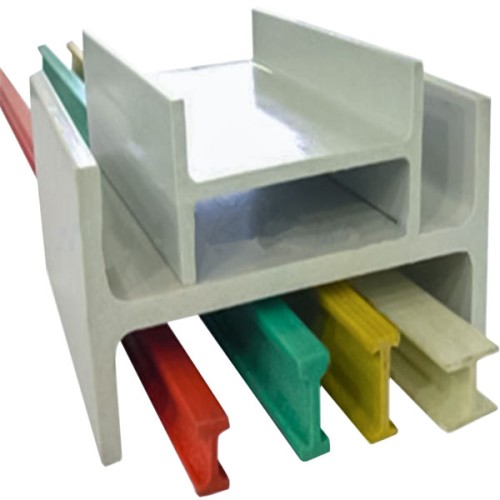Fiberglass H-Shape Beam Profile: Definition and Manufacturing
The Fiberglass H-Shape Beam Profile is a pultruded structural component engineered from fiber-reinforced polymer (FRP). Manufacturers layer fiberglass strands with thermosetting resins, pulling them through a heated die to create uniform H-shaped cross-sections. This process ensures high tensile strength, dimensional stability, and resistance to environmental stressors. Unlike traditional steel beams, FRP H-beams eliminate rust risks while maintaining load-bearing efficiency.
Classification and Specifications of H-Shape Fiberglass Beams
Fiberglass H-Shape Beam Profiles classify by load capacity, dimensions, and resin type (e.g., polyester, vinyl ester). Standard widths range from 50mm to 300mm, with customizable lengths up to 12 meters. These beams often meet ASTM D4476 standards for mechanical properties. Key variants include high-strength fiberglass H-beams for industrial frameworks and lightweight composite H-beams for modular construction.
Applications of FRP H-Shape Beams Across Industries
The corrosion-resistant H-profile beam excels in harsh environments. Marine industries use it for dock pilings and boat frames, while chemical plants rely on acid-resistant FRP beams for structural supports. Architects favor pultruded fiberglass beams for bridges, roofing, and façades due to their UV stability and low thermal conductivity.
Fiberglass vs. Steel H-Beams: Key Advantages
Composite H-Shape Beams outperform steel in weight reduction (70% lighter), corrosion resistance, and electrical insulation. Unlike steel, FRP beams require no galvanizing or painting, reducing lifecycle costs. However, steel remains preferable for ultra-high-temperature applications. For moderate climates and corrosive settings, FRP structural beams are unmatched.
Installation Guidelines for H-Shape Fiberglass Profiles
Install pultruded FRP H-beams using stainless steel bolts or adhesive anchors. Avoid direct contact with sharp metals to prevent surface abrasion. Pre-drill holes to prevent splitting and ensure even load distribution. Pair with fiberglass grating or FRP channels for seamless structural integration.
Why Choose Fiberglass H-Shape Beam Profiles?
From custom FRP beams to standardized profiles, these solutions combine durability with versatility. Their non-conductive nature makes them ideal for electrical substations, while their low maintenance appeals to infrastructure projects. Explore FRP H-beam suppliers for tailored specifications.

